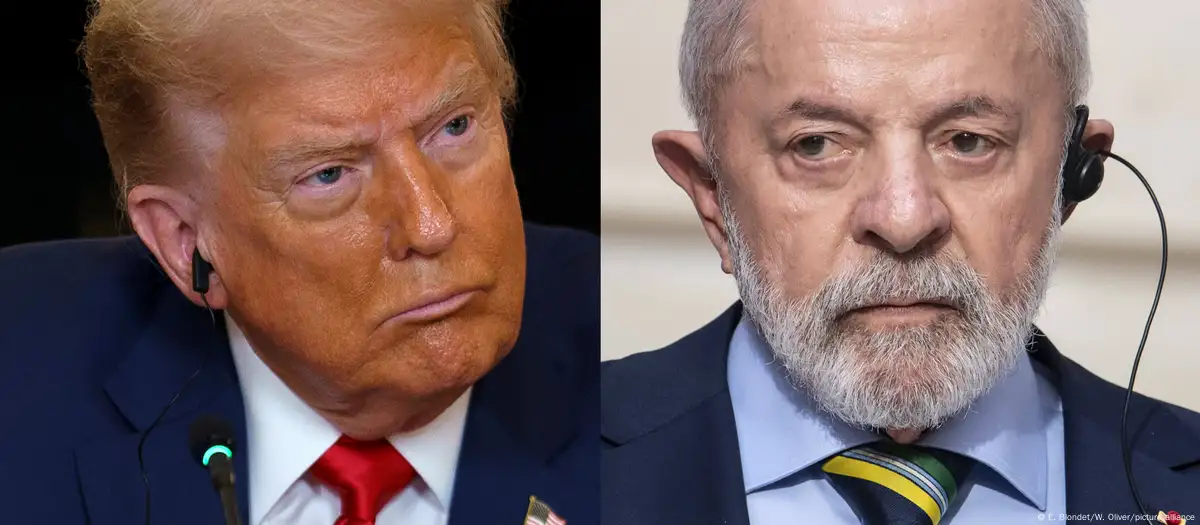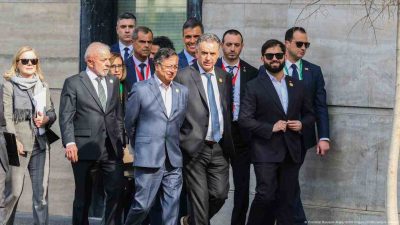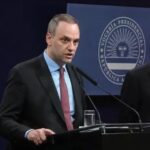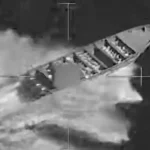
The US seeks to rebuild influence in the region with military and political pressure, while Brazil defends regional integration and sovereignty. Tension goes beyond clashes over tariffs and reignites debate about protagonism.
The possible meeting between President Luiz Inácio Lula da Silva and his American counterpart, Donald Trump, must go beyond Brazil’s attempt to pacify trade relations between the two countries. It exposes a growing dispute between leaders from opposite spectrums for influence over Latin America, at a time when the continent returns to the center of global geopolitical strategies and the White House’s interest.
In recent months, Trump has escalated tensions with Venezuela, accused the government of Colombian Gustavo Petro of “failing in the fight against drugs”, reinforced the trade embargo on Cuba and pressured the president of Argentina, Javier Milei, to contain the country’s rapprochement with China. At the same time, it has sought to establish the US military presence in the region, with repeated attacks on alleged drug trafficking vessels in the Pacific Ocean.
Lula, on the other hand, tries to reposition Brazil as an interlocutor of stability and dialogue, defending that Latin America becomes a “zone of peace” and that the countries in the region “not allow themselves to be drawn into disputes between global powers”. The speech reflects an attempt to recover Brazil’s diplomatic protagonism and to present an alternative to the logic of automatic alignment with Washington.
“Lula tries to rehabilitate South American concertation diplomacy [prática de coordenação e diálogo político entre os países]with an emphasis on regional mechanisms and social agendas. Trump, on the other hand, operates through asymmetric pressure, such as tariffs, sanctions, etc. It is not a dispute of ‘personal leadership’ only, but of framing Latin America as a platform for integration and diversification of partnerships, in the Brazilian view, or as a zone of influence under security and trade conditions, in the Trumpist view”, says FAAP professor of International Relations, Lucas Leite.
Brazilian project contrasts with American hegemony
The meeting between the presidents should take place next Sunday, in Malaysia, where both will participate in the Asean (Association of Southeast Asian Nations) summit. The objective is to consolidate Brazil’s diplomatic rapprochement with the USA, which has been shaken since the Republican returned to the White House and imposed extra tariffs on Brazilian products.
Although it has not been officially confirmed by the Palácio do Planalto, Lula has publicly reinforced his interest in it happening.
In the meantime, the two leaders exchanged direct criticism. Lula stated that Trump wanted to be “the emperor of the world” while the American claimed that Brazilian institutions did a “terrible thing” when judging former president Jair Bolsonaro.
The two met during the UN Assembly in September and promised to talk. A first meeting via videoconference was evaluated as positive by both sides.
US pressures region with unprecedented military operations in the Pacific Ocean | US President Donald Trump’s TRUTH Social account/AFP
There is no “prohibited subject”
During a visit to Indonesia this Friday (10/24), he said that there is no “forbidden topic” to talk about with the American. The expectation announced by the Brazilian is that Washington will reconsider the surcharges, but also discuss Latin American issues.
To journalists, Lula said he disagreed with the possibility of a country suffering attacks under the justification of combating drug trafficking, in reference to American action against vessels. “If fashion catches on, each one thinks they can invade the other’s territory to do what they want. Where will the word respectability to the sovereignty of countries appear? So I intend to discuss these issues with President Trump if he puts it on the table”, he stated.
The movement indicates that the negotiations must reflect more lasting issues in the foreign policies of the two countries, which go beyond the governments of the moment, says Lívia Peres Milani, researcher at the Institute of Public Policies and International Relations at UNESP.
“For the United States, maintaining hegemony has been a permanent strategic objective since the 19th century. In this second Trump term, there is a more acute perception of risks to this hegemony and a greater willingness to impose it through force. This perception of risks had been brewing for some time, since the Obama administrations, but is resulting in more aggressive practices now”, he states.
“As for Brazil, the project of building leadership in South America also has important historical antecedents, including in the first Lula governments. It is important that this idea of leadership refers to South America, it does not include the Caribbean, Central America and Mexico, places where US hegemony is more intense”, he adds.
Dispute echoes decades of effort
Just as in the past, the region is affected by the echoes of the political dispute between two powers that represent different ways of seeing the world, now represented by China and the United States. For Milani, the discourse of strategic competition, which sees Latin America as part of a global dispute involving China and Russia, already appeared discreetly during Barack Obama’s administration in the USA, but gained strength with Donald Trump’s first term and continued under Joe Biden.
“It is a return to the disputes between great powers that seemed to be overcome with US hegemony in the 1990s,” says Milani. The conflict ends up weakening the regionalism proposed by Brazil. “But, it is possible and necessary to strengthen it, which is a medium and long-term project, which must be based on social participation and democratization. Trump’s militarism helps to illuminate such convergences and is an invitation to strengthen regional governance.”
For Lucas Leite, Trump rescues the rhetoric of the Cold War, which divides “friends” and “enemies”, but uses another language. “What is at stake today is the control of production chains, strategic technologies and trade routes. It is less about ideology and more about economic and technological power”, he explains. “The discourse of existential threat, for example, goes far beyond the issue of nuclear weapons. And as before, Latin America enters this board as a space for dispute for influence”, he says.
Regional blocs under pressure
Despite the intention of the two political actors to be protagonists, reality imposes itself, bringing difficulties to both plans. On the Brazilian side, the growing lack of consensus among countries in the region makes possible leadership in the agenda of regional integration and defense of sovereignty difficult.
“Unlike the first decade of the 2000s, where you had a convergence in relation to the visions of what Latin America, especially South America, should be, and how countries should get closer to each other in order to obtain more gains in international negotiations, this consensus today is very fragile”, says Pedro Brites, professor of International Relations at FGV.
 Latin American countries that disagree with automatic alignment with the US have suffered clashes with Trump | Cristobal Basaure Araya/SOPA Images/ZUMA/picture alliance
Latin American countries that disagree with automatic alignment with the US have suffered clashes with Trump | Cristobal Basaure Araya/SOPA Images/ZUMA/picture alliance
Furthermore, trade and regional integration blocs have lost relevance in recent years. The Community of Latin American and Caribbean States (Celac) has become more of a space for dialogue than a bloc with executive capacity, argues Leite, from FAAP. “Mercosur continues to be the most structured, but it needs to update itself, deal with new agendas such as clean energy, technology and infrastructure, and overcome the internal differences that hinder agreements”, he states. The reactivation of the Union of South American Nations (Unasur) also does not appear to be at the top of the countries’ priorities.
On the US side, the excess of interventions, influenced by the Monroe Doctrine, which sought to expand American influence in Latin America, is increasingly worrying leaders in the region.
“The United States, historically, has been more interventionist in Central America and the Caribbean, and South America has always been much more active under specific pressures, on governments, threats, sanctions, but it did not necessarily have such a direct threat of military intervention as we are seeing in relation to Venezuela, for example, now”, says Brites.
Furthermore, China has consolidated itself as the main trading partner for most Latin American countries, boosting the region with credit, investments in infrastructure and technological transfer. The USA, in turn, seeks to contain this expansion through strategic bilateral agreements and increasing diplomatic pressure to ensure alignment on sensitive issues, ranging from telecommunications networks to the control of critical minerals, with emphasis on Brazil.
“This puts Latin American countries in a delicate position. Nobody wants to choose a side, but everyone needs to manage dependencies. The challenge is to transform this dispute into an opportunity: attract investment, negotiate technology transfer and strengthen regional autonomy”, says Leite. “The risk is to fall back into a game of dependence, in which the agenda is defined outside the region. Ultimately, Latin America remains without autonomy and the ability to articulate its interests without having to take extra-regional powers into account.”
Originally published by DW on 10/25/2025
By Vinicius Pereira
Source: https://www.ocafezinho.com/2025/10/26/reuniao-de-lula-com-trump-expoe-disputa-por-lideranca-na-al/

